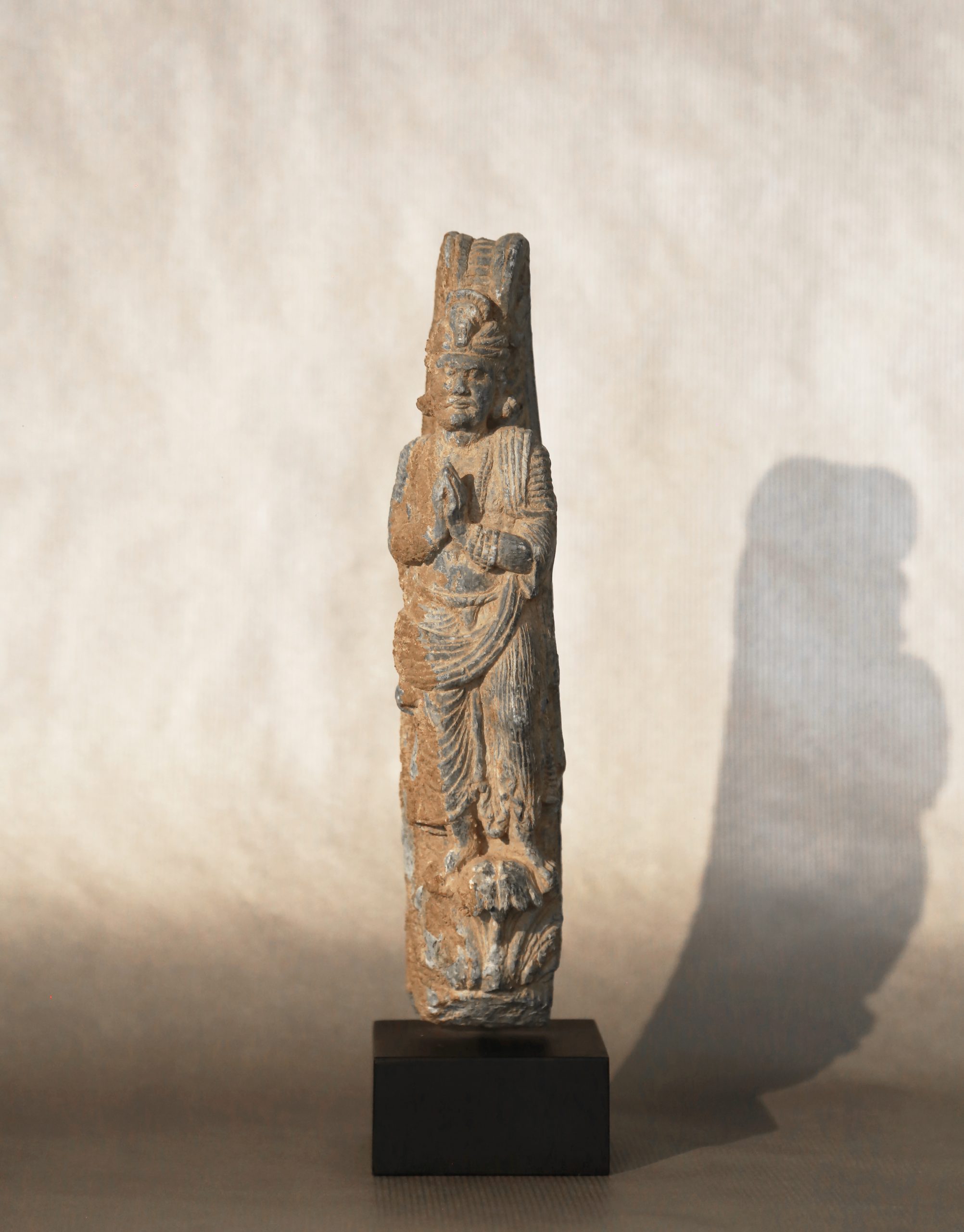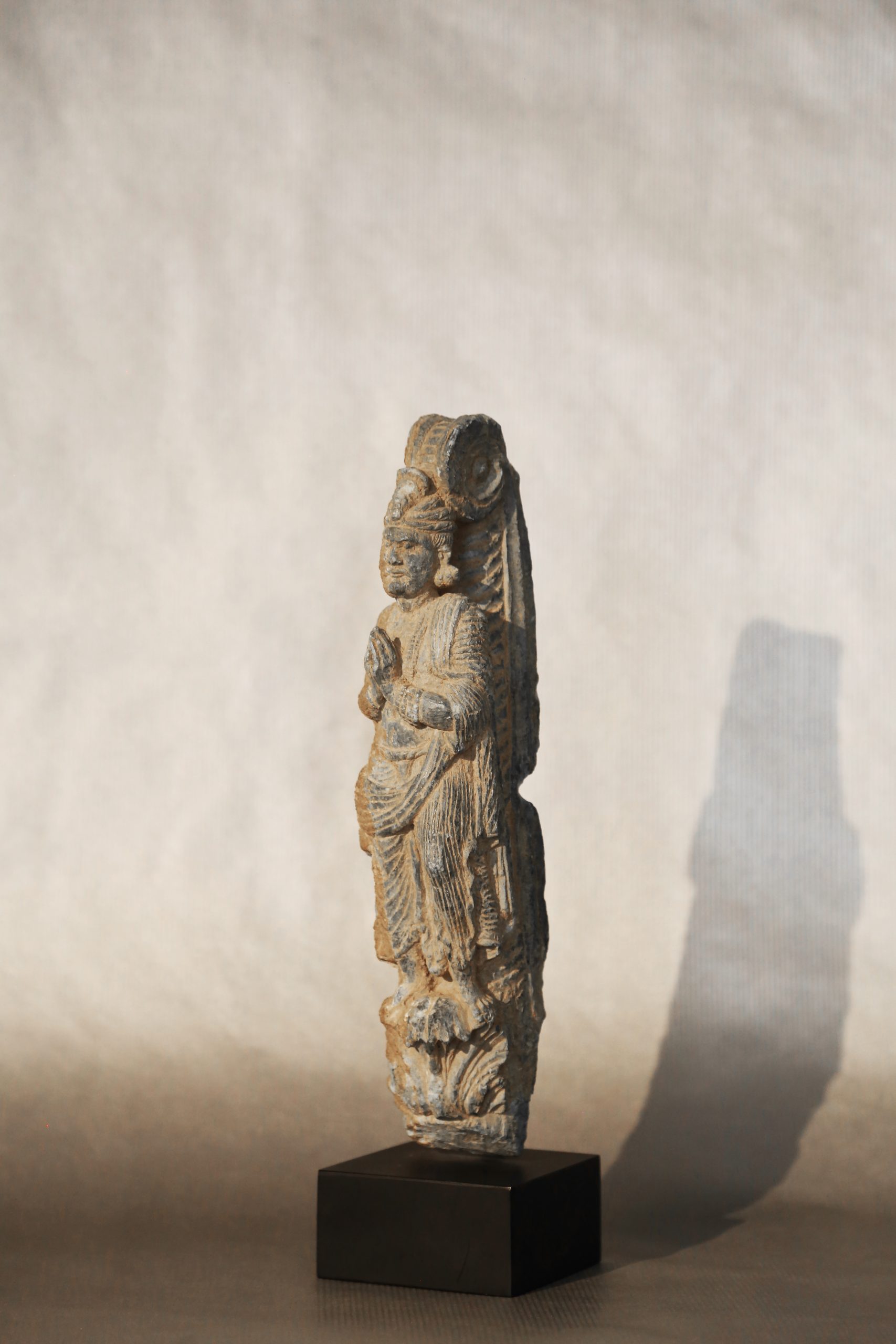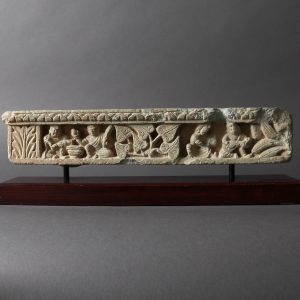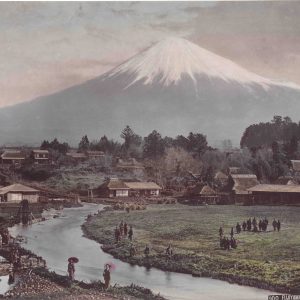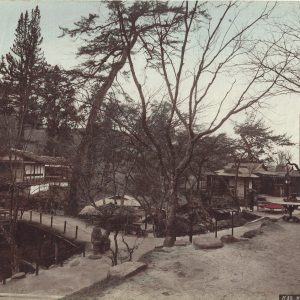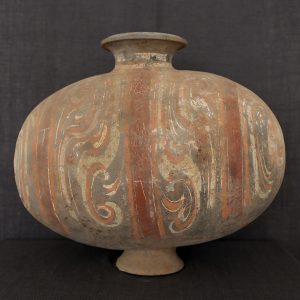Devotee
Schist
Ancient region of Gandhāra
Circa 2nd century
H. 27 cm or 10 ⅝ in
Description
A figure of devotion
Figured with great finesse and a natural posture, this male figure stands with his hands held together against his chest in the gesture of devotion (añjali mudrā). He is dressed and wears rich jewellery like an Indian prince, confirming his status as a wealthy lay devotee. His dress is typical of this ancient region of Gandhāra: a large piece of cloth is wrapped around his waist and is secured in the center by a knot that pulls on the fabric, letting a piece of it fall between his legs. A long scarf is wrapped twice around his left arm and shoulder, passing at the back to rest at the front on the top of his legs in a nice drape. The man wears a turban held on his forehead by a sophisticated central knot, from which radiate bands of fabric, crowned by a fan-shaped buffet. To this complex volumes, rich jewels are added, including heavy earrings, multiple bracelets and a long necklace.
Cosmopolitanism of Gandhāra: Indo-Parthian style and Greek influence
This figure is absolutely representative of the art under the reign of the Kuṣāṇ rulers, and the facial features as well as the rendering of the drapery show both Greek and Parthian influences, while comparable pieces suggest an origin in the Swat valley. The wide-open bulging eyes, the small depressions underlining the mouth and the moustache are characteristic of this Indo-Parthian art. The same is true of the close parallel lines depicting the pleating of the garment: the tension of the garment is rendered by a set of concentric curved folds on the right thigh of the man. The left side is striated with long vertical pleats falling in points around the ankles. Finally, the rising acanthus below the devotee has several leaves with drooping lobes. It is a motif directly influenced by Greco-Roman art.
A unique function
This piece is also fascinating for the large volute on which the devotee leans. Its edges reproduce mouldings in the stone and a succession of striations decorate its inner and upper face. In a very elegant manner, the sculptor has hollowed out the space between the back of the head of the figure and the volute. By comparison with several works preserved in major American museums, we can conclude that this piece was a kind of support (curators use different words: peg, bracket, or even corbel; in Sanskrit: nāgadanta), which had at the back of its base a tenon allowing it to be inserted into the masonry of a building, very probably a stūpa. Indeed, it seems that such figures placed high up on the drum of stūpa were used to hold garlands of decorative and ephemeral flowers. Such figures were paid by donors, who wished to perpetuate their prayers.
Provenance: Private Collection, US, acquired in NY in the 1990s.

